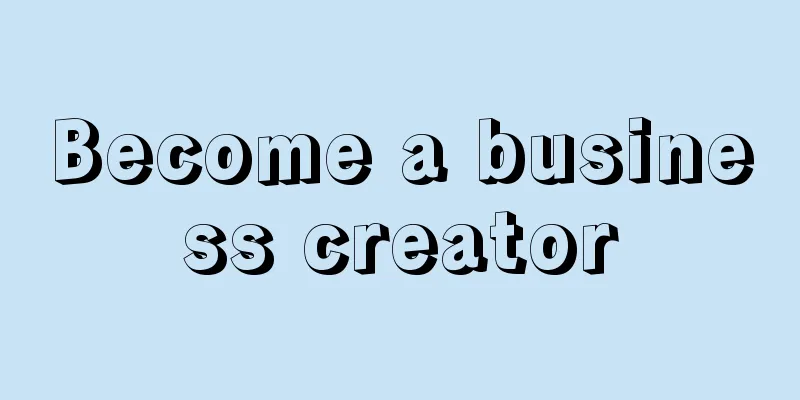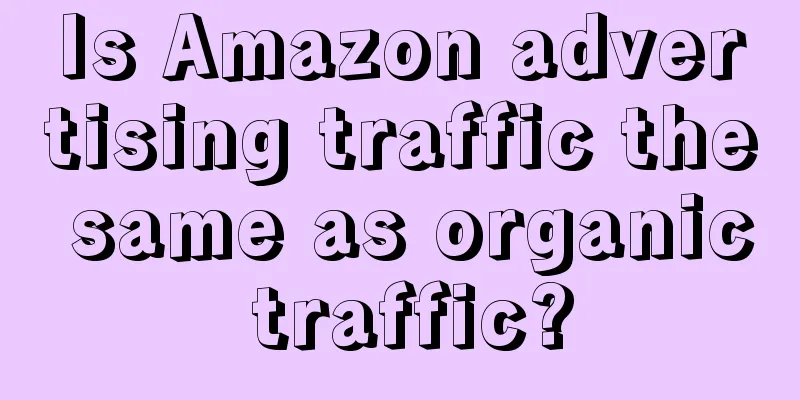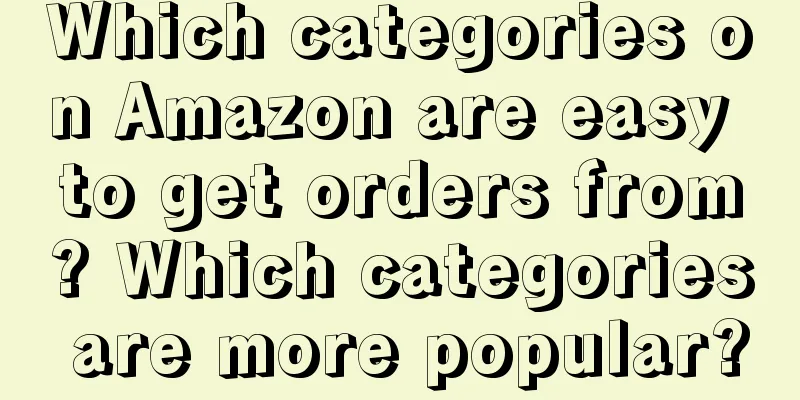Become a business creator

Recently, friends around me have raised many questions about the development of self-media. For example: the client's budget has all gone to short video platforms, and it is becoming increasingly difficult to get product promotion advertising; some big accounts that do paid knowledge have found that people are no longer listening to their classes, and the conversion rate is getting lower and lower. Ask me what I think about this matter? I personally have always felt that simply creating content is not a good business. Indeed, looking back over the past few years, many big Vs have made a lot of money by selling knowledge, accepting brand advertising, and creating paid communities. Nowadays, the situation has changed. Every person has his own media teacher. Graphics, text, voice, and video are all available. With the rise of AI technology, content creation has become more rampant. It is definitely difficult to create content according to the past thinking. If you stop and analyze the KOLs who have managed to stay afloat amidst the changes, you will find that the key to their success is not how talented or hardworking they are, but understanding a basic principle: The self-media business cannot rely on brand advertising, and must become a business-oriented creator. 1. Commercial CreatorsSimply put, treat your own content as a product service, and plan, produce, and promote it in a targeted manner according to changes in market demand, so as to achieve the transition from customer acquisition to conversion. This is different from industry media. Industry media specializes in writing about a certain industry, such as technology or finance, and their content is mostly analytical, with the goal of attracting brand owners to invest in advertising. Commercial creators are a little different. We not only pursue how many people watch it, but also dig deep into market trends to see what the market lacks now, and then use our own thinking and professional knowledge to create content that is both attractive and commercially feasible. This will not only attract readers, but also attract more brand business cooperation. For example: Financial bloggers on short video platforms. Whenever there is a hot topic in the market, such as a stock market surge or a fluctuation in an economic policy, these bloggers will use their professional knowledge to interpret these hot topics. This kind of timely and in-depth interpretation can attract a large number of people who are interested in finance. When these people want to learn more popular science information or seek further investment methods, the blogger will guide them to add WeChat, buy courses, and join the community. In this way, bloggers can realize the process from content production to commercial transformation on the small B side. In other words, operators do not rely solely on advertising revenue. Even if brand owners approach them, they can provide more in-depth and professional explanations and content for the advertisements based on their professional expertise. I have a friend who used to be in charge of the marketing department. He resigned last year and started trying freelance work. Although it is called "freelance", his business volume is actually quite large. Where do these businesses come from? When I just resigned, in order to avoid being idle, I insisted on writing 500-1000 words of thoughts every day and posting them on the official account. The content mainly involved brand marketing and public relations. Unexpectedly, it gradually attracted a group of readers. In order to facilitate the establishment, he introduced himself and gave a detailed account of his professional background and work experience; among the readers who learned about his professional abilities, some were willing to pay for his updated content. Some companies also invited him to share his experiences at their companies. During this process, he also came into contact with and connected with many other businesses, and eventually became an external brain for some companies. In this way, he gradually transformed from an initial content creator to an operator, opening up a new path for his career. This route is an inevitable trend. If you don’t believe me, just take a look at platforms like Xiaohongshu and Douyin. Some bloggers have only 10,000 or 20,000 fans. They can achieve conversions by showing their skills and business through live broadcasts and short videos. I have a friend who mainly shares writing skills on the video account. At first, I thought, who would still learn this? Unexpectedly, in just half a year, he has recruited 800 students and set up three WeChat groups. I have also gained a lot of clients by writing about brand insights and cognitive psychology. What does this mean? As long as you have skills and business and display them in the right way, you can become an operator. 2. Why should you become a commercial creator instead of an industry insight account?First, the industry media has no foundation. The advantages that an industry self-media account relies on include using low-cost manpower, quickly editing content, attracting a large number of readers with this content, and organizing offline activities with great momentum. But these things are not reliable, and it is not difficult to learn. As long as the timing is right, rich people can copy this model and start a business in an instant. The result is obvious. When there is news about a big company, thousands of accounts will come to comment. Take yesterday’s Pinduoduo financial report as an example: As soon as the financial report came out, countless self-media followed up, with all kinds of analysis ranging from growth to comparisons with Alibaba and JD.com; in fact, with so many voices coming out, only a few people read it. Moreover, these contents often lack depth and are more like repeating what others have said; you might say that technology media clients are big companies and brands, but have you ever thought about what brands focus on? Based on my 7 years of experience in leading the marketing department of a client, when brands place advertisements, they don’t need you to do any deep insights, just do it as required. To put it bluntly, it’s nothing more than looking at whether the data looks good. Now, not only the data is involuted, but also the content quality is involuted. Yesterday, I was chatting with a friend who works in the short video e-commerce market. He said that the results of his Double 11 advertising campaign for tech media were poor and he almost lost his job. He spent 80,000 yuan on the manuscript, but ended up changing three lead writers, adjusting the content 5-6 times, and the final product was mediocre. Not only was the manuscript not written by an industry writer, it looked like AI, with no core, a bunch of macro descriptions, and was difficult to read; my boss even suspected that I was taking kickbacks. The biggest inspiration I got from the whole conversation is: brand demands have changed, budgets are smaller, and content is in short supply. I firmly believe that good content has long-term contribution value to brand building and business expansion. Therefore, whether from an industry perspective or a personal perspective, I do not recommend doing industry self-media at the moment. Another point, look at the industry self-media now, how many of them really go to the company for on-site research? Most of the content is washed. Those authors who really pursue in-depth content may also ask acquaintances to understand the situation. But most small organizations are too lazy to even ask, and directly use ready-made content analysis, so it is not worth involution. Second, the media narrative is different from reality. The macro narratives in self-media are often far from the actual situation. Take the retail industry for example, store openings and closings happen every day, and people in the industry think it is normal. But for insight-oriented media, due to the need for originality and the amount of content on their accounts, they may not have the time to do research, and when they see something like this, they immediately report it as major news. Real experts and practitioners in the retail industry will laugh when they see this. I used to work in the retail industry, and I can say responsibly that there are very few people in China who truly understand the retail industry and can write good articles. If the media content has little value and depth, making money will be very dependent on the situation of the entire industry. Once there is any disturbance in the industry, professional media may face financial difficulties. This is a challenge faced by many industry media today. Therefore, there is no need to do any research that is just floating in the air. Besides, vertical self-media is also very saturated now. What’s more, you may not have that much energy to do it. From the reader's perspective, reading an article is to find useful information for oneself, whether the article is soft or not is not important. Many people are unhappy with soft articles, either because the quality of the article is too poor and they feel fooled, or they like to criticize soft articles to show that they are smart. I think the ultimate role of self-media is to eliminate information asymmetry and allow readers to maintain the ability to think independently. Having this conscience is enough. Obviously, the quality of the industry’s self-media itself is not very good. As individuals, we can be more elegant and survive as researchers and business creators. 3. To be honest, the era of large traffic has passed, and the ecosystem is "strongly penetrating"When the ecosystem is just starting, the power law is obvious, with 20% of the top companies controlling 80% of the resources and influence. When the ecosystem is perfected, this concentration trend will no longer continue. Why? There are two reasons:
Take entertainment self-media as an example. Suppose a self-media is recognized by Party A for its unique content and innovative money-making model. This success will attract other players with capital. They will observe and analyze how the other party succeeded, and then quickly copy it. Eventually, many similar self-media quickly emerged in the market, each trying to imitate the existing successful model to gain a foothold. In traditional logic, whether a self-media that relies on advertising can survive longer depends mainly on four key factors: more customers, creating better content, higher data, and greater influence. As more participants join, these four variables will change. Take the example above: When there are 10 similar self-media writing "industry analysis" in the market, brand owners will face more choices and they can look for the most suitable partners in a wider range. This will lead to changes in the market competition: some are cheaper than you, some are cheaper than you but have better content, some are cheaper than you but have good content and high data; some have all four. Therefore, in traditional self-media, only those who can continuously improve and innovate in these four key factors can survive in the competition. Of course, in addition to industry involution, platforms will also intervene and change key variables. Because there is no new technology to release more market dividends, the platform must take a series of measures to increase revenue in order to improve its operating efficiency. Take the WeChat ecosystem as an example: In order to prevent big brand advertisers from being diluted by other short video platforms, the platform has to implement a strong market penetration method. This method is mainly based on two principles: one is to control and guide the overall market trend, and the other is to change the original dissipative structure. What is a dissipative structure? Just like the orderly state in a market or community, this state is dynamic and active. Take the market for example, there are companies, customers, and products in it. These things constantly interact and exchange information, which makes the market more dynamic. When we say that WeChat changes the dissipative structure, we mean that for its own benefit, WeChat will influence the way the market operates by changing the rules and adjusting strategies. For example: What you have seen recently is that WeChat has added long videos, hot topics, and promotions on the reading page. There are strikethroughs in the articles, and the strikethrough content will appear in the advertisements at the bottom of each public account, just like the content of Xiaohongshu. This approach is like adjusting traffic lights in a busy city, the purpose of which is to guide the flow of resources and information in the market towards more profitable platforms. Through similar practices, WeChat can increase the diversity and richness of content, promote the activeness of new creators within the ecosystem, and enhance their position in the fierce market. If you understand these, you will understand that the operating logic of self-media has changed. The most obvious change is that the platform is now more inclined to recommend content that is of good quality or has incremental value. The probability of recommending content that is plagiarized, repeatedly combined, and highly overlapping is very low. This is also one of the reasons why the number of readers of large-scale articles has generally declined. Therefore, for commercial creators, the trend lies in whether you can bring new information and new perspectives to readers to attract them to know you. 4. How to become a qualified commercial creator?I think there are three points: 1. You must study something in depthThe content in the market has exploded, but there is very little systematic content with practical value. Many people are writing about Charlie Munger's lifelong thinking model today. Have you noticed that whether it is critical thinking, interdisciplinary combination, or the concepts of antifragility and entropy increase, these theories often lack specific practical guidance. In other words, many people know the concepts but don't know how to apply them in practice. This reminds me of the profound experience I had when I read "The Poor Charlie's Almanack". Munger once said: "There are two kinds of knowledge, one is real knowledge, and the other is just performance." He emphasized that if knowledge is scattered, isolated, and superficial, then it has no meaning, and it can even make you look stupid when you can't answer why. Human society can only develop rapidly after humans "invented the method of invention". By the same token, we can only make progress after we "learn the method of learning". This is why I believe that a qualified commercial creator needs to continue to delve deeper into a certain field, profession, or job skill, form a complete set of methods, and use it to penetrate the industry. Examples abound. For example, H&H, Luo Zhenyu's Get, and Fan Deng's Readings, they are not the best creators in the traditional sense, but they have all formed unique content services after in-depth research in a certain field. 2. Output ideas and applied contentAt the beginning, you can’t do one thing well. The core of text and video expression lies in structured training, which is the basic condition for becoming a creator. I think it is enough to express the content completely and remember the Golden Circle. This is my experience over the years. What (What), why (Why), how (How). However, I have adjusted the order because only when you have made clear your own views and definitions can you explain clearly "why you understand it this way", the motivations behind it, the purpose, and the approach. In other words, first identify the "what" (your opinion and definition), then the "why" (your understanding and motivation), and finally the "how" (your practical methods). This order will help you structure and express your content more clearly and logically. How do you judge whether a piece of content is good? The method I have come up with is called HKR. H stands for happy. Works that can bring happiness to people have natural spreadability. K stands for knowledge. Content that allows people to learn knowledge will naturally leave an impression on people. R stands for resonance. Touching people's hearts is a common characteristic of excellent works. Putting these six dimensions together can leave a strong impression on others. You don't have to worry about not finding a field to study. Often, even a small topic can bear fruit. I have a friend who focuses on copywriting research. He has written hundreds of articles on copywriting. Recently, publishers have been looking for him, asking if he would consider compiling this set of things into a manual. Therefore, as long as you can persevere and delve into a certain aspect, you will definitely be able to produce valuable results. Remember, don't be too macroscopic and don't do things that are purely theoretical and cannot be put into practice. There will always be someone smarter than you. 3. Build a closed loop for business transactionsHowever, having value does not mean making money. Commercial creators need to understand "business". Management is selling. Selling is solving problems. Solving problems requires delivering products. New products are evolved and are painful when they are born. What should we do? Take it step by step. There is no other way. It's like making a course. You can't spend a day recording the course introduction, audio and video. If you feel overwhelmed, you might as well try my "Partner Culture Method". What does it mean? Now the culture of partners is popular, which can be used in course or product development. You can find some partners, similar to readers, and invite them to a small group, where they can supervise and experience what you do for free. This method can help you get feedback and support during the development process. Once everything is working, you can use it to charge for your product. Once you successfully develop a product, you open the door to continuous innovation and development of more products. When the product line is rich enough, you can provide more offline services based on it and use your own media to promote it. In this way, a complete GROW growth model is constructed. In simple terms, field research, continuous provision of valuable content, formation of methods, attraction of attention, and sale of products and services are all required to achieve sustainable operation of self-media. Everything does not affect the acceptance of commercial advertisements, it has become a new circulation system. In summary, business-oriented creators emphasize the ability to generate self-sustaining income. The day before yesterday, I was still thinking, when the number of readings and likes cannot be converted into direct benefits, what else will we (readers, brand owners) pursue? We will focus more on the content itself, and it seems that we are now shifting in this direction. Author: Wang Zhiyuan WeChat public account: Wang Zhiyuan (ID: Z201440) |
<<: I have been working in operations for 14 years. Come and see how I write copy!
>>: This is how annual targets should be set, not by guesswork.
Recommend
13 micro-operations for Xiaohongshu’s effective advertising
In the process of advertising on Xiaohongshu, how ...
Brand No. 1: Brand competition, growth model summary
In the digital age, brand growth strategies have b...
Why is Amazon's automatic advertising not exposed? What is the reason?
We have opened a store on Amazon, and we need to f...
What should I do if there are only 50 or so visitors on AliExpress? How can I increase visitors on AliExpress?
Having an AliExpress store but only getting 50+ vi...
Is there a promising future for the toy business?
Will the toy business be a promising field in the ...
Wufangzhai, made a French art film?
Wufangzhai's Dragon Boat Festival movie is act...
From "grass-growing power" to "appealing power", brands need to become "issue suppliers"
Many people say that product promotion is not as e...
Learn to "borrow" to make your copywriting more outstanding!
Copywriting is the soul of brand marketing. How to...
Video e-commerce in the past year: from private domain to public domain, from social to algorithm
Video account e-commerce has achieved significant ...
ChatGPT's new feature is online. Can it help you edit videos now?
Recently, OpenAI finally released its big move, Co...
Can I register a Lazada P card as an individual? Can I use it?
There are two ways to receive payment at Lazada. T...
How to promote on Amazon? What are the methods?
If we open a store on Amazon, we have to promote t...
What kind of applications will AIGC have in the ToB business model?
This article introduces several different roles th...
Why is cross-border e-commerce operation easy to do? How to do it?
Nowadays, with the advancement of globalization, t...
Where can I view the internal messages on Amazon? How can I find them?
Speaking of Amazon, it actually has internal messa...









